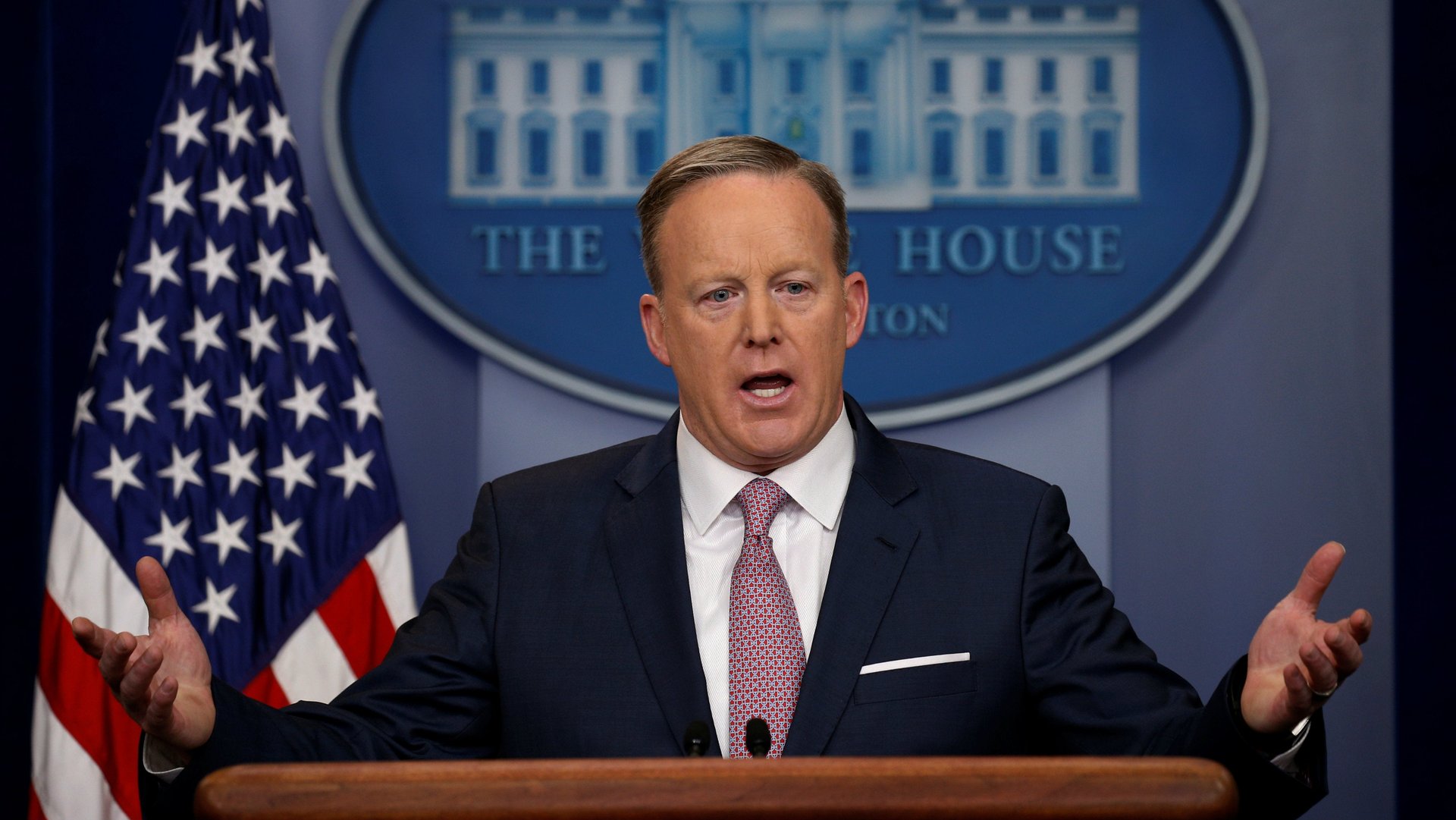Trump’s White House cited a nonexistent reason for freezing federal hiring
One of Donald Trump’s first actions as US president was to sign an executive order (pdf) to freeze non-military federal hiring. The move, White House press secretary Sean Spicer explained at a Jan. 23 press briefing, “counters the dramatic expansion of the federal workforce in recent years.”


One of Donald Trump’s first actions as US president was to sign an executive order (pdf) to freeze non-military federal hiring. The move, White House press secretary Sean Spicer explained at a Jan. 23 press briefing, “counters the dramatic expansion of the federal workforce in recent years.”
In reality, no such dramatic expansion occurred.
The US federal government employs nearly 2.2 million people, accounting for about 1.4% of all employment in the country. That makes it the nation’s largest employer (Wal-mart is second). It’s true that during US president Barack Obama’s eight years in office, the federal government added a little over 120,000 jobs, but that’s about 60,000 fewer than were added during former US president George W. Bush’s administration, and employment by the federal government as share of all US employment is relatively low compared to most of the last 70 years. (The spikes in the following chart represent workers brought on temporarily to conduct the US decennial census.)
The Washington Examiner reported prior to Trump’s inauguration that, beyond the hiring freeze, the administration would look at making serious cuts in federal government employment. The Examiner suggested the possibility of staff cuts of up to 20% in some departments.
During his campaign, Trump promised to protect military, public safety, and public health jobs from a hiring freeze. (The actual executive order only exempts military and and public safety hirings from the freeze, with no mention of public health.) About 75% of all federal jobs are in those three areas, so that leaves a little over 500,000 federal jobs still vulnerable to potential cuts. An across-the-board 20% cut in all those jobs would mean the federal government would lose about 100,000 jobs.
A more likely scenario is Trump targeting jobs in a limited number of agencies that previous statements suggest Trump thinks are bloated. These agencies include the departments of Education, Labor, Health and Human Services, and Housing and Urban Development, and the Environmental Protection Agency. If Trump were to cut employment by 20% at those agencies, it would mean the loss of over 25,000 federal jobs.
A reduction in federal government employment wouldn’t just affect Washington. Only 15% of federal government workers work in the Washington DC area. The pain of federal government job loss would likely be felt across the US.